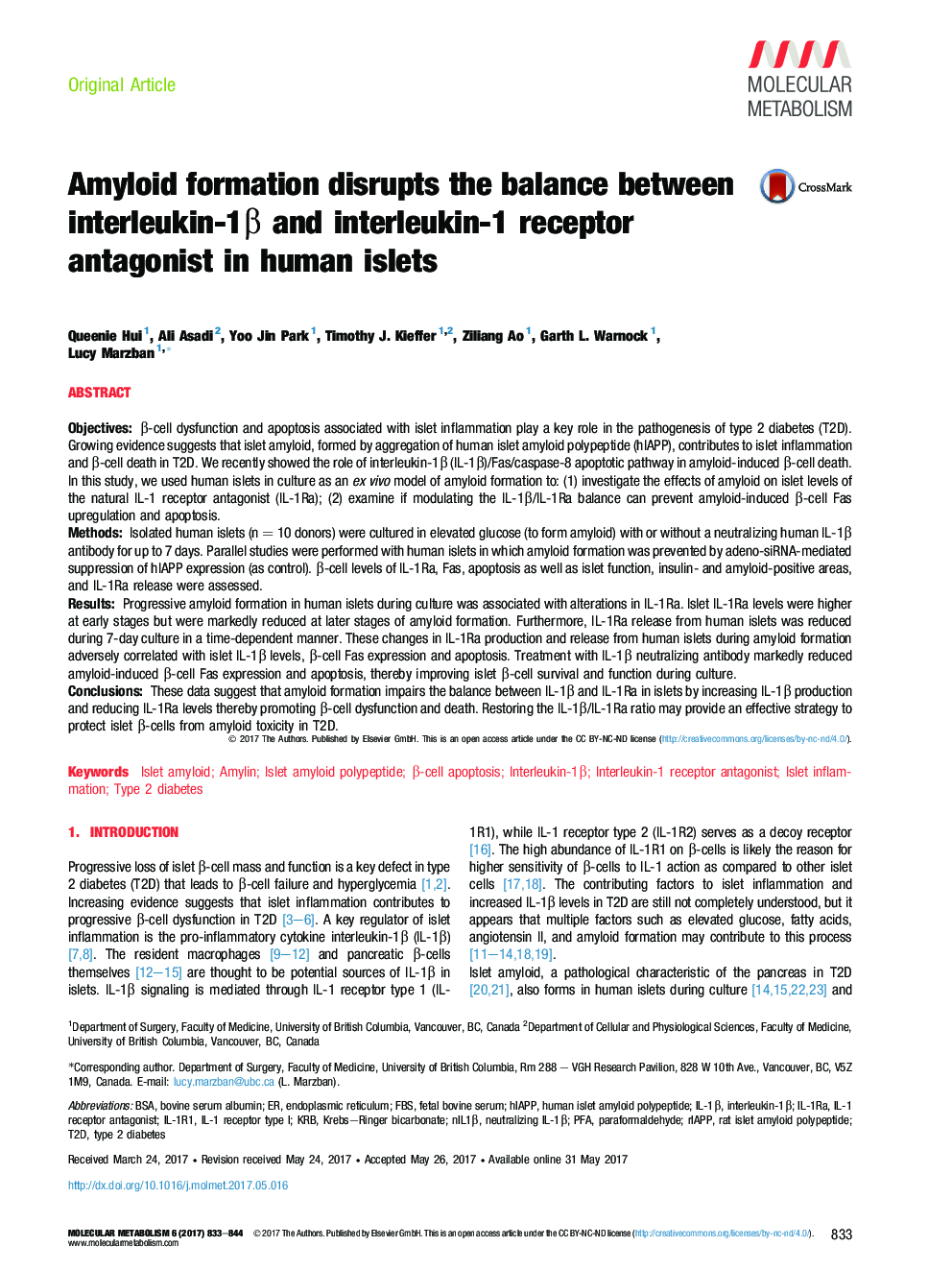| کد مقاله | کد نشریه | سال انتشار | مقاله انگلیسی | نسخه تمام متن |
|---|---|---|---|---|
| 5618704 | 1406033 | 2017 | 12 صفحه PDF | دانلود رایگان |

- Endogenous amyloid formation alters IL-1Ra levels in human islet β-cells.
- Amyloid impairs islet IL-1β/IL-1Ra balance by promoting IL-1β and reducing IL-1Ra.
- Restoring IL-1β/IL-1Ra ratio by blocking IL-1β protects human islets against amyloid.
Objectivesβ-cell dysfunction and apoptosis associated with islet inflammation play a key role in the pathogenesis of type 2 diabetes (T2D). Growing evidence suggests that islet amyloid, formed by aggregation of human islet amyloid polypeptide (hIAPP), contributes to islet inflammation and β-cell death in T2D. We recently showed the role of interleukin-1β (IL-1β)/Fas/caspase-8 apoptotic pathway in amyloid-induced β-cell death. In this study, we used human islets in culture as an ex vivo model of amyloid formation to: (1) investigate the effects of amyloid on islet levels of the natural IL-1 receptor antagonist (IL-1Ra); (2) examine if modulating the IL-1β/IL-1Ra balance can prevent amyloid-induced β-cell Fas upregulation and apoptosis.MethodsIsolated human islets (n = 10 donors) were cultured in elevated glucose (to form amyloid) with or without a neutralizing human IL-1β antibody for up to 7 days. Parallel studies were performed with human islets in which amyloid formation was prevented by adeno-siRNA-mediated suppression of hIAPP expression (as control). β-cell levels of IL-1Ra, Fas, apoptosis as well as islet function, insulin- and amyloid-positive areas, and IL-1Ra release were assessed.ResultsProgressive amyloid formation in human islets during culture was associated with alterations in IL-1Ra. Islet IL-1Ra levels were higher at early stages but were markedly reduced at later stages of amyloid formation. Furthermore, IL-1Ra release from human islets was reduced during 7-day culture in a time-dependent manner. These changes in IL-1Ra production and release from human islets during amyloid formation adversely correlated with islet IL-1β levels, β-cell Fas expression and apoptosis. Treatment with IL-1β neutralizing antibody markedly reduced amyloid-induced β-cell Fas expression and apoptosis, thereby improving islet β-cell survival and function during culture.ConclusionsThese data suggest that amyloid formation impairs the balance between IL-1β and IL-1Ra in islets by increasing IL-1β production and reducing IL-1Ra levels thereby promoting β-cell dysfunction and death. Restoring the IL-1β/IL-1Ra ratio may provide an effective strategy to protect islet β-cells from amyloid toxicity in T2D.
Journal: Molecular Metabolism - Volume 6, Issue 8, August 2017, Pages 833-844